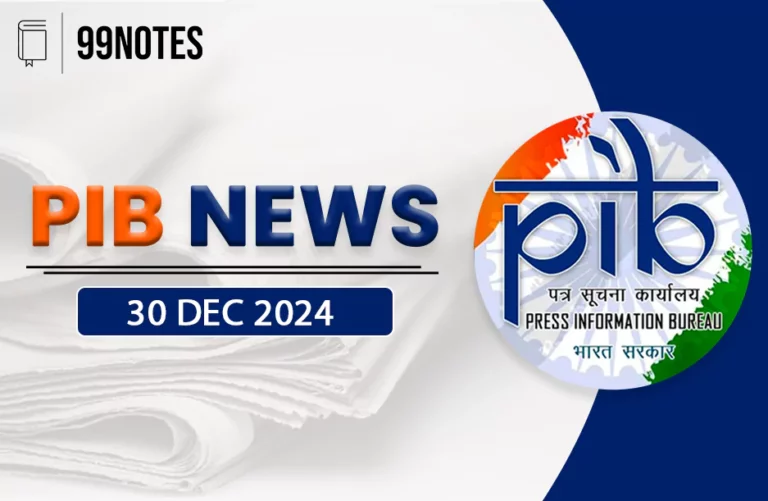04 January 2025 : The Hindu Editorial Analysis
1. The looming threat to federalism and democratic tenets
(Source – The Hindu, International Edition – Page No. – 6)
| Topic: GS2 – Indian Polity |
| Context |
|
Historical Context of Simultaneous Elections
- Simultaneous elections were common in India post-Independence but disrupted by the imposition of Article 356 (President’s Rule).
- The first misuse of Article 356 occurred in Kerala in 1959, reflecting federal overreach and disrupting Union-State relations.
- B.R. Ambedkar termed Article 356 a “dead letter,” but it has been invoked over 130 times, leading to the dismissal of several State governments.
Impact of Defection and Anti-Defection Law
- Defections destabilize State governments, leading to unconstitutional regime changes.
- The Anti-Defection Law, introduced through the 52nd Amendment in 1985, penalizes defectors but has loopholes, such as delays in Speaker decisions and allowance for group defections.
Challenges with ONOE Framework
Constitutional and Governance Implications
- ONOE requires amendments to Articles 83 and 172, which guarantee five-year terms for Parliament and State Assemblies.
- Aligning State election cycles with national elections could curtail or extend State government tenures, undermining State autonomy.
Democratic Concerns
- Voters may struggle to evaluate State and national governments independently due to simultaneous elections.
- Abbreviated terms for State governments in midterm ONOE cycles dilute the principle of “one person, one vote, one value.”
- Past political turbulence in the mid-1990s highlights that ONOE could lead to frequent elections in short periods, negating cost-efficiency arguments.
Logistical and Administrative Challenges
- Managing elections for over 900 million voters across Lok Sabha, State Assemblies, and local bodies would strain resources and institutions.
- Voter fatigue and confusion could arise, diminishing electoral effectiveness.
Systemic Issues Requiring Attention
Misuse of Article 356
- The misuse of Article 356 continues despite judicial efforts like the S.R. Bommai case judgment to restore State autonomy.
Anti-Defection Law Reforms
- Loopholes in the anti-defection framework need addressing to ensure stability in State governments.
Strengthening Federalism
- The federal structure recognizes India’s diversity and plurality, requiring State autonomy to remain intact.
- ONOE, without systemic reforms, risks centralizing power and eroding the federal character of governance.
Conclusion
- ONOE, while promising fiscal and administrative efficiencies, poses significant risks to India’s federal and democratic framework.
- Democratic governance must prioritize the principles of federalism and equitable partnership between the Centre and States to preserve the Constitution’s essence.
| PYQ: ‘Simultaneous election to the Lok Sabha and the State Assemblies will limit the amount of time and money spent in electioneering but it will reduce the government’s accountability to the people’ Discuss. (150 words/10m) (UPSC CSE (M) GS-2 2017) |
| Practice Question: Critically examine the proposal of ‘One Nation, One Election’ (ONOE) in the context of its potential impact on India’s federal structure and democratic principles. Highlight the constitutional, logistical, and governance challenges associated with its implementation. (250 Words /15 marks) |
2. India, cross-border insolvency and legal reform
(Source – The Hindu, International Edition – Page No. – 6)
| Topic: GS2 – International Relations, GS3 – Indian Economy |
| Context |
|
Importance of a Reliable Insolvency Framework
- International trade growth has heightened the challenges of cross-border insolvency.
- A predictable framework is essential for economic stability, foreign investment attraction, and corporate restructuring.
Historical Background of Insolvency Laws in India
- The Indian Insolvency Act, 1848 was India’s first insolvency law during British rule.
- It was replaced by the Presidency-Towns Insolvency Act, 1909 for Calcutta, Bombay, and Madras, and the Provincial Insolvency Act, 1920 for mofussil regions.
- These laws addressed domestic insolvencies but left cross-border insolvencies unaddressed.
Post-Independence Evolution of Insolvency Framework
- Despite recommendations from the Third Law Commission in 1964, no reforms occurred until economic liberalization in the 1990s.
- Committees such as the Eradi Committee (2000), Mitra Committee (2001), and Irani Committee (2005) emphasized adopting the UNCITRAL Model Law on Cross-Border Insolvency (1997).
- The Insolvency and Bankruptcy Code (IBC), 2016 emerged, focusing on domestic insolvencies, with Sections 234 and 235 addressing cross-border issues.
Cross-Border Insolvency Challenges in India
- The Jet Airways (India) Limited vs. State Bank of India (2019) case exposed the inefficacy of Sections 234 and 235.
- The absence of reciprocal arrangements with foreign nations and the non-notification of these sections rendered them ineffective.
- The NCLT termed these provisions as “dead letters” since they exist in law but are unenforceable in practice.
Government Initiatives for Reform
- Expert committees, including the Insolvency Law Committee (2018) and the Cross-Border Insolvency Rules/Regulation Committee (2020), recommended adopting the UNCITRAL Model Law.
- The Parliamentary Standing Committee on Finance endorsed these recommendations in its Thirty-Second Report (2021) and Sixty-Seventh Report (2024), emphasizing the urgent need for a robust framework.
Current Ad Hoc Solutions and Limitations
- Protocols like the cross-border insolvency protocol have been used in individual cases but remain temporary solutions.
- These methods increase judicial burden, transaction costs, and delays, diminishing asset value.
Key Recommendations for Reform
- Adoption of UNCITRAL Model Law:
- Provides a structured framework to replace ad hoc solutions.
- Ensures predictable and effective cross-border insolvency resolution.
- Modernizing Judicial Coordination:
- Adopting the Judicial Insolvency Network (JIN) Guidelines (2016) and its Modalities of Court-to-Court Communication (2018) can enhance efficiency and transparency.
- Expanding NCLT Powers:
- The NCLT, as the sole adjudicating authority, lacks powers to recognize or enforce foreign judgments.
- Empowering the NCLT and implementing Rule 11 of the NCLAT Rules (2016) can address these limitations.
Conclusion
- Implementing these reforms will strengthen India’s insolvency framework and improve its ability to handle cross-border cases effectively.
| Practice Question: Discuss the challenges faced by India in managing cross-border insolvency cases and suggest reforms to address these issues. (150 Words /10 marks) |
For more such UPSC related Current Affairs, Check Out: 03 January 2025 : The Hindu Editorial Analysis


